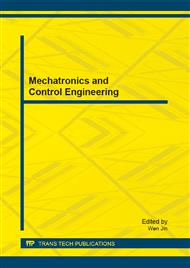[1]
M.J. Moore, C. Sieverding. Two-phase steam flow in turbines and separators: theory, instrumentation, engineering. Hemisphere Publishing Corp, Washington, DC, 1976.
Google Scholar
[2]
M.J. Moore, C. Sieverding. Aerothermodynamics of low pressure steam turbines and condensers. Hemisphere Publishing, New York, 1986.
Google Scholar
[3]
E. Perrell, W. Erickson, G. Candler. Numerical simulation of nonequilibrium condensation in a hypersonic wind tunnel. Journal of thermophysics and heat transfer, 10 (1996) 277-283.
DOI: 10.2514/3.784
Google Scholar
[4]
Z. Di. The study on liquid-droplet motion, droplet solid impaction and liquid-corrosion fatigue of wet steam turbine-blades. Xi'an Jiaotong University, Xi'an, 2001.
Google Scholar
[5]
Y. Maozheng, H. Yue. Deposition of water law and dewetting method in end class divisions of turbine. Turbine Technology, 27 (1988) 44-46.
Google Scholar
[6]
C. Yinian. Steam turbine. Xi'an JIaotong University Press, Xi'an, 1988.
Google Scholar
[7]
H. Zhonghe, Y. Kun. Reviews on wetness measurement methods of wet steam in turbine. Journal of North China Electric Power University, 29 (2002) 44-47.
Google Scholar
[8]
C. Xiaoshu, N. Fengxian, N. Yanbao, e. al. Measurement of Wet Steam in a 300MW Direct Air-cooling Low Pressure Turbine. Proceedings of the CSEE, 29 (2009) 1-7.
Google Scholar
[9]
H. Zhonghe, Z. Shue, T. Songfeng. Study on a method of wetness measurement based on resonant cavity perturbation for steam turbine exhaust. Proceedings of the CSEE, 23 (2003) 199-202.
Google Scholar
[10]
W. Zhi, A. Liansuo, H. Zhonghe. Numerical study on impacts of blade profile modification on homogeneous condensation. Proceedings of the CSEE, 29 (2009) 125-130.
Google Scholar
[11]
C. Yinian, W. Naining. Two-phase flow of wet steam. Xi'an Jiaotong University Press, Xi'an, 1983.
Google Scholar
[12]
C. Zhenguo. Microwave technology base and Application. Beijing University of Posts and Telecommunications Press, Beijing, 1996.
Google Scholar
[13]
L. Ying. Microwave,millimeter-wave sensors and non-power detection. Electronic Industry Press, Beijing, 1991.
Google Scholar
[14]
Q. Jiangbo, H. Zhonghe. Theoretical Analysis of Cavity Perturbation Techniques for Measuring Wet Steam Tow-phase Flow. Proceedings of the CSEE, 32 (2012) 79-85.
Google Scholar
[15]
Q. Jiangbo, H. Zhonghe, Z. Meifeng. Study on Dielectric Properties of Wet Steam in Turbine. Proceedings of the CSEE, 31 (2011) 100-106.
Google Scholar


